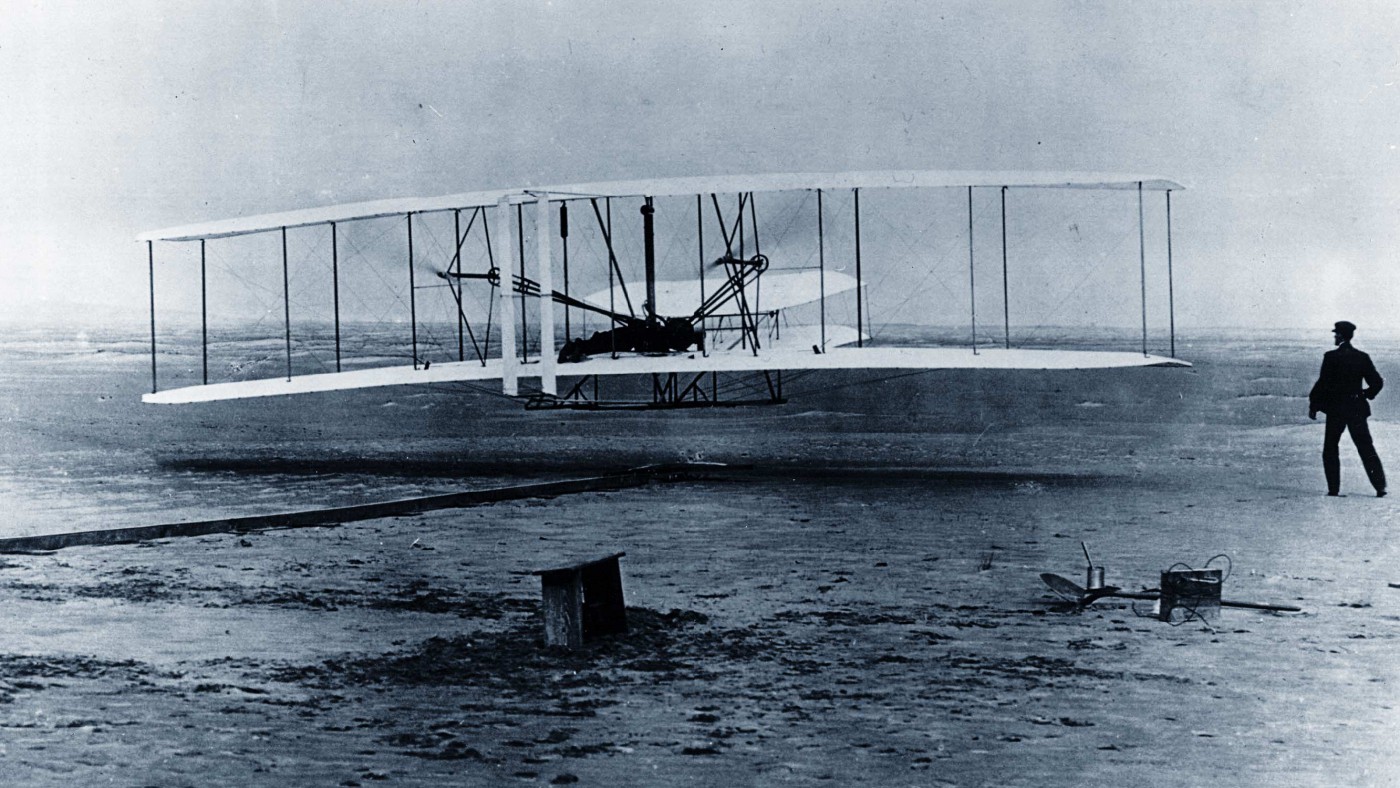The Wright brothers have long been credited as the first to achieve flight. “Aviation pioneers”, Orville and Wilbur Wright’s first powered and sustained flight launched at Kitty Hawk, Northern California on 17th December 1903 in their craft, the Wright Flyer.
But following years of controversy and argument, in June 2013, Connecticut Gov. Dannel P. Malloy signed a law giving German-born aviator and Connecticut resident Gustave Whitehead the honour of being first to achieve man-powered flight. Research by William J. O’Dwyer showed that Whitehead’s 1901 airplane (a high-wing monoplane with an enclosed fuselage and two propellers) was closer to today’s lightplane configurations than any built by his contemporaries. His US aviation ‘firsts’ also included aluminium in engines and propellers, wheels for take-off and landing, ground-adjustable propeller pitch, individual control of propellers (to aid in directional control), and folding wings for towing on roads.
Less than four months later, on October 23 2013, Ohio state Rep. Rick Perales and North Carolina state Senator Bill Cook held news conferences to dispute Connecticut’s action and reassert the Wright Brothers were first in flight.
The debate will probably continue. But there is still something special about the Wright brothers to celebrate here, whether they were first or not. That is their determination, dedication and innovation which ultimately led them to succeed.
The brothers were born in Ohio from a background of no money, and had no financial sponsor in their aviation projects. They had almost no foundation in life – even though both brothers had been academic neither achieved high school diplomas due to the family moving state in 1884. Yet Orville, the younger of the two, started a printing business in 1889, having designed and built his own printing press with Wilbur’s help. In March the brothers launched a weekly newspaper, the West Side News, and later converted the paper to a daily, The Evening Item.
When they started to lose out to commercial printing, as keen competitive cyclists, they capitalized on the national bicycle craze (spurred by the invention of the safety bicycle and its substantial advantages over the penny-farthing). They opened a repair and sales shop in December 1892, the Wright Cycle Exchange, and in 1896 began manufacturing their own brand. It was from this business they grew funds to fuel their growing interest in flight.
Amongst their research of European glider flights, they spent hours studying the flight of birds. Their ideas on how to change the angle of the wing tips to make the body of the plane roll or bank, which eventually lead to their breakthrough of three-axis control (which, incidentally, became and remains standard on fixed-wing aircraft of all kinds) was modelled on birds.
They learnt a key principle of entrepreneurial endeavour too. A line from Wilbur’s journal states that “no bird ever soars in a calm”, and this beautifully captures a hard truth: adversity is what lifts us.
Returning to Kitty Hawk on December 17th, their final flight of the day lasted nearly a minute, covered more than 850 feet, and produced one of the world’s first documented loss-of-control accidents in a powered aircraft. The landing broke the front elevator supports, which the Wrights hoped to repair for a possible four-mile (6km) flight to Kitty Hawk village. Soon after, a heavy gust of wind picked up the Flyer and rolled it, damaging it beyond any hope of repair. It was never flown again.
The Wrights continued refining their designs and piloting techniques culminating in a new Flyer in 1904 and even more decisively in 1905 with a third Flyer, in which Wilbur made a 39-minute, 24-mile (39 km) nonstop circling flight on October 5th.
These brothers had had no inside track, yet they made it. These were truly entrepreneurial innovators. Their feat shows you can’t underestimate the importance of hard work in success, and changed the way we live our lives: the way we see the world and how we achieve discovery, peace and war.
President Barack Obama seems to have understood the importance of this message, and has signed a proclamation to continue the annual tradition of honoring the Wright brothers on December 17th and their contributions to flight.


